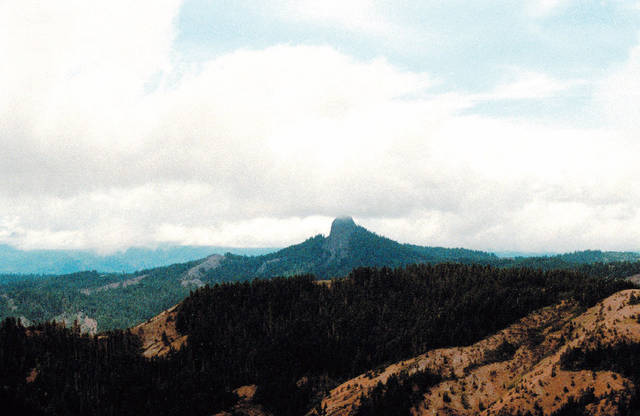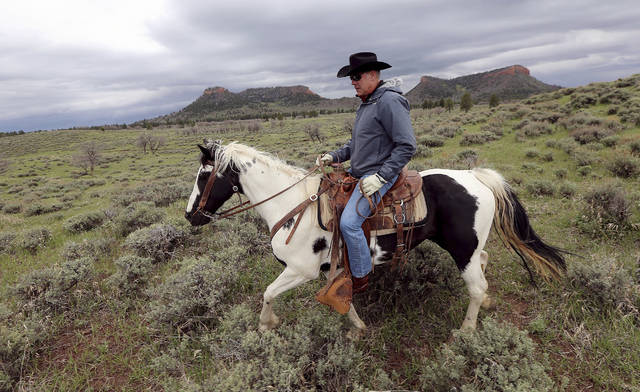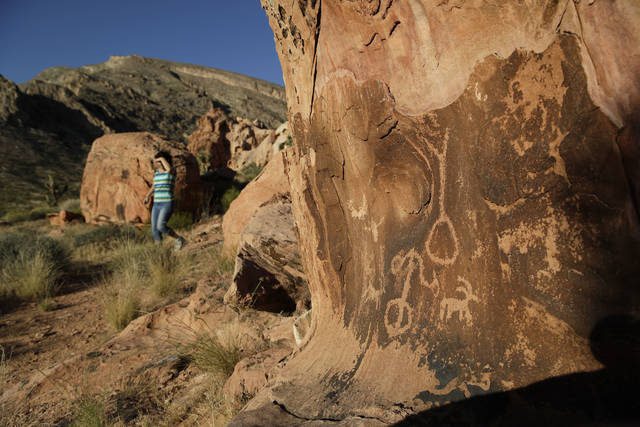Trump’s national monument changes return to spotlight



SALT LAKE CITY As Democrats in Congress prepare to scrutinize President Donald Trumps review of 27 national monuments, most of the recommendations made by ex-Interior Secretary Ryan Zinke remain unfinished, seemingly stuck on the backburner as other matters consume the White House.
SALT LAKE CITY — As Democrats in Congress prepare to scrutinize President Donald Trump’s review of 27 national monuments, most of the recommendations made by ex-Interior Secretary Ryan Zinke remain unfinished, seemingly stuck on the backburner as other matters consume the White House.
Trump acted quickly in December 2017 on Zinke’s recommendations to shrink two sprawling Utah monuments that had been criticized as federal government overreach by the state’s Republican leaders since their creation by Presidents Barack Obama and Bill Clinton.
But in the 15 months since Trump downsized the Utah monuments, the president has done nothing with Zinke’s proposal to shrink two more monuments, in Oregon and Nevada, and change rules at six others, including allowing commercial fishing inside three marine monuments in waters off New England, Hawaii and American Samoa.
Zinke is now gone — after resigning in December amid multiple ethics investigations — and has joined a Washington, D.C. lobbying firm. Trump has nominated as his replacement Acting Interior Secretary David Bernhardt, a former lobbyist for the oil and gas industry and other corporate interests.
A sweeping public lands bill signed into law on Tuesday by Trump creates five new monuments — two of which Zinke suggested — but none of the reductions or other changes he recommended.
The monument review was based on arguments from Trump and others that a law signed by President Theodore Roosevelt allowing presidents to declare monuments had been improperly used to protect wide expanses of lands instead of places with particular historical or archaeological value.
On Wednesday, the House Natural Resources Committee will host a hearing that the Democratic majority said will focus on the “inadequate” nature of the administration’s review. Democrats claim the move to shrink the monuments was illegal and overlooked overwhelming support for keeping them intact.
Speakers include tribal leaders, a leading paleontologist and a conservationist who are expected to say their arguments for protecting the land were ignored during the review.
People and groups who advocated for the changes are disappointed with the inaction and in the dark about White House plans. Some critics of the monument review, meanwhile, say the delay shows Trump’s intent all along was to launch the sweeping review as justification to shrink the Utah monuments to appease powerful politicians such as former U.S. Sen. Orrin Hatch, who in return gave the president support for his causes.
Environmental, tribal and paleontology groups called the review an attack on protected land that put at risk habitat rich with ancient artifacts, wildlife and dinosaur fossils and sued the challenge the shrinkages at the Utah monuments.
On the other side are commercial fishing operators who say jobs will be lost unless Trump reverses Obama’s 2016 creation of the Northeast Canyons and Seamounts monument off the New England coastline, where boats previously targeted squid, swordfish, tuna and other fish.
Bonnie Brady, executive director of the Long Island Commercial Fishing Association, recalled meeting with Zinke in 2017 to air the industry’s concerns.
“We left that room, I want to say, hopeful. And we still have some hope, but it would be great to actually have some results,” she said.
Brady said hopes Trump would sympathize with the industry’s economic struggles “seem to be forgotten so far to date.”
Interior Department spokesman Alex Hinson said the White House has not requested information about the monument recommendations since Zinke submitted his proposals in August 2017.
A White House official who spoke on condition of anonymity because the official was not authorized to discuss deliberations said the Trump administration was still considering taking action, but declined to elaborate.
House Natural Resources Committee Chairman Raul Grijalva said he believes the Utah monuments were targeted immediately for shrinking in order to open up the lands for the extraction of coal and uranium. The Arizona Democrat said in an interview that his efforts to confirm those suspicions had been frustrated when his party was in the minority, by the administration’s refusal to turn over documents related to Zinke’s recommendations.
Zinke and Trump advocated for a return to American energy dominance but through mid-February, lands stripped from the Utah monuments haven’t been mined, according to state and federal officials who approve permits.
Grijalva spokesman Adam Sarvana said Wednesday’s hearing will focus on the Utah monuments, which he said serve as a template for what other communities could expect if more of Zinke’s recommendations are acted upon.
Heidi McIntosh, managing attorney for the Earthjustice conservation organization, said she wonders if Trump has pushed the other recommendations deep into the backburner because he doesn’t have much to gain politically in states besides Utah by enacting them.
She said the lack of an outcome for so many monuments “raises questions if this was really about abuses they saw in monument designations or whether it was really more of a political deal that he had made with the Utah senators?”
Conn Carroll, spokesman for Utah Sen. Mike Lee, had no immediate comment.
Former Utah Sen. Orrin Hatch — the state’s other senator when the recommendations were issued — defended the importance of the monument review.
“Regardless of what radical environmental groups in San Francisco say, the president’s monument review was about fixing monumental disasters and getting input from Utahns to balance the needs of local communities with the original intent the Antiquities Act,” Hatch said in a statement.
Brown reported from Billings, Montana.


